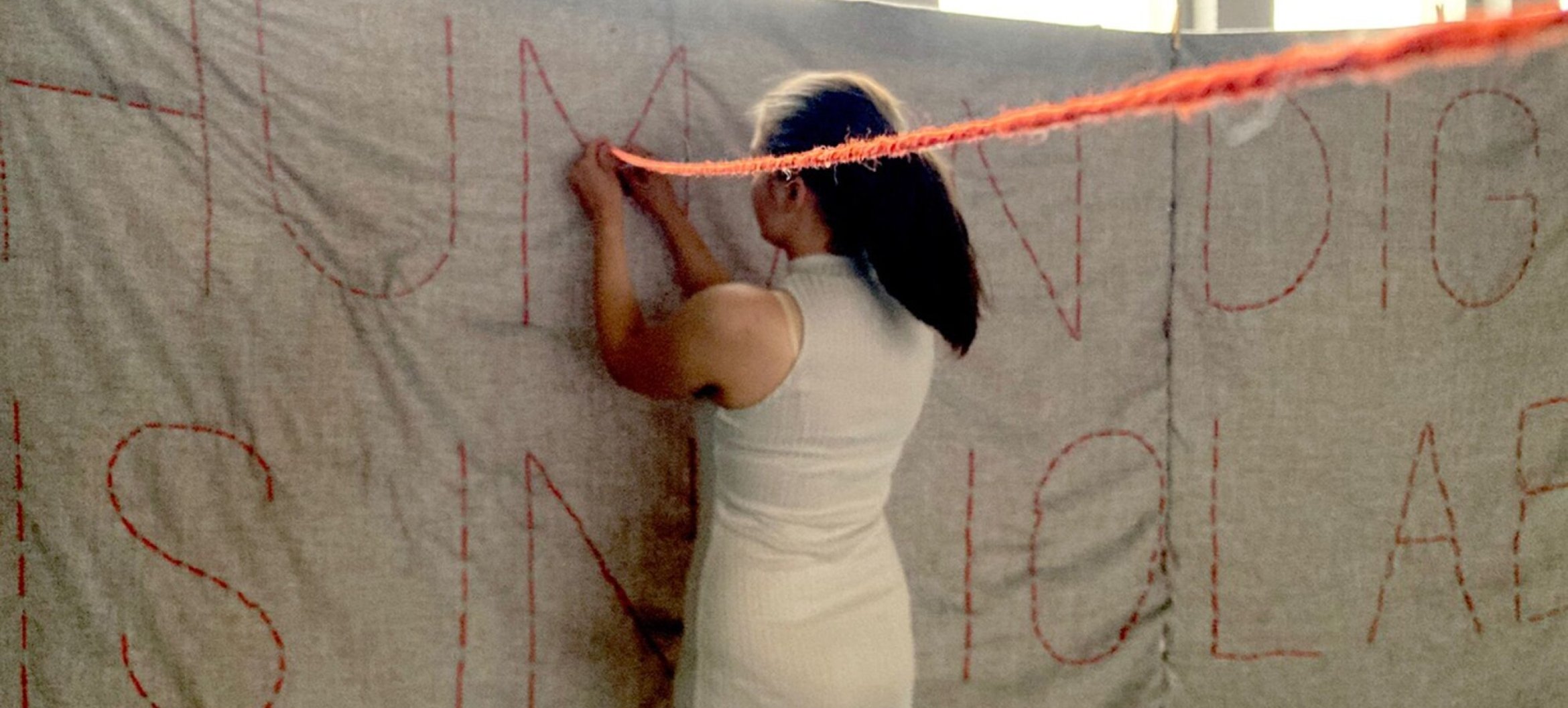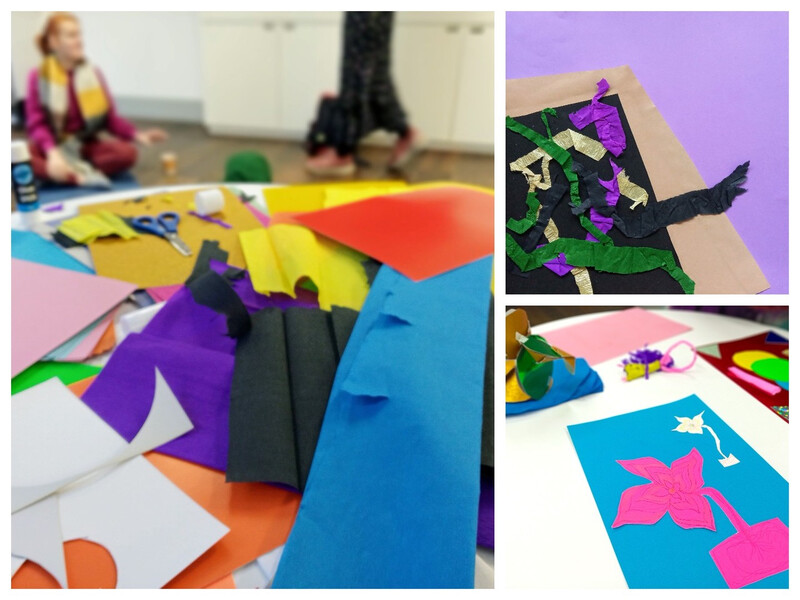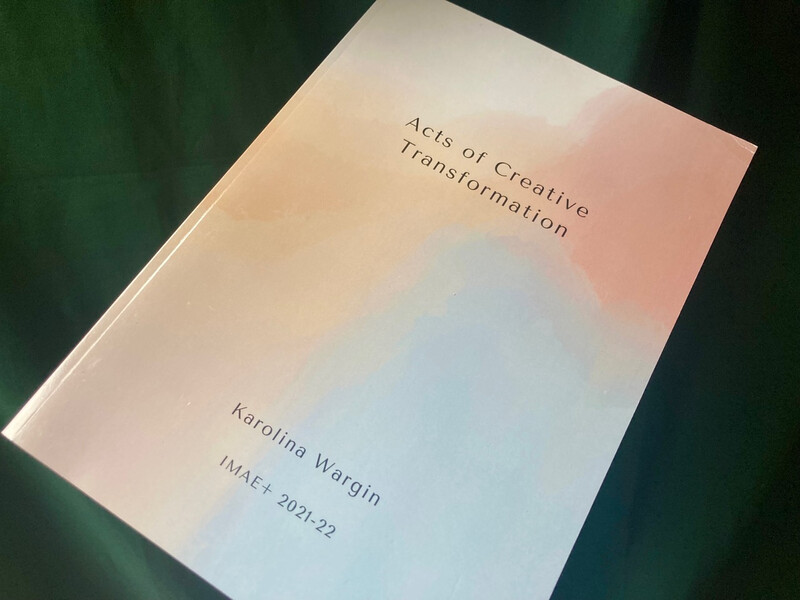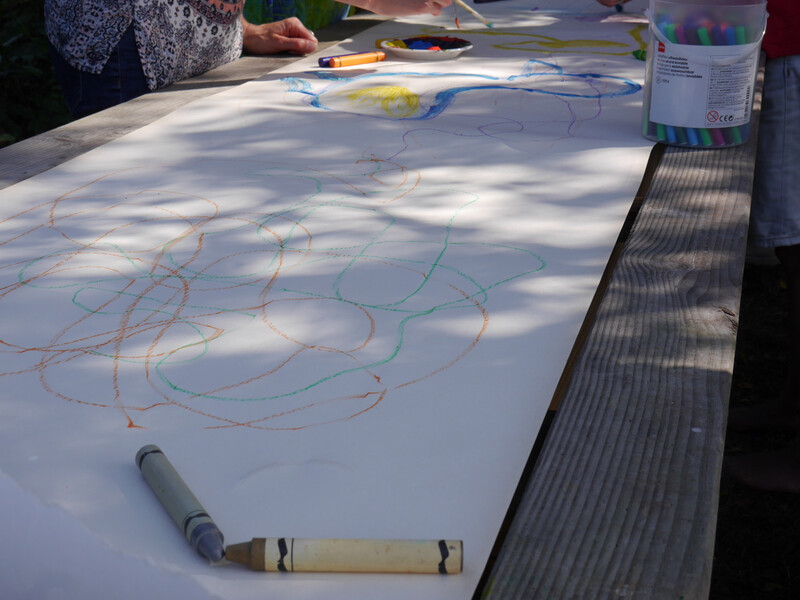Karolina Wargin

“Acts of creative transformation”: Embodied-creative learning practice
Self
My artistic journey started 7 years ago, when my yoga practice began. Through the deep connection with my body, I was able to reveal the creative side in me which was hidden since I was a kid. In this exploration, I opened my body to the movement through dance improvisation and to play with colours and shapes through visual expression (painting and collage making). This practice led me to experience a profound connection between the body and the creative flow.
Starting from a personal experience, I wanted to broaden my view and to learn how to make my practice socially-engaged. During the studies at iMAE, I was given the space to explore my knowledge in a critical way and to find the link between practice, theory, and social issues. Here, I focused my work on the topics of reproductive justice (“Human dignity is inviolable”, performance, Het HEM, Zaandam - June 2021), creativity and mental health (“Madelief” care farm, Kranenburg, Aug-Sep 2021), and body awareness (“The power inside our bodies” workshop, The MAC, Belfast - December 2021). As a final result, I have been developing my methodology called “embodied-creative learning”.
Other
Belfast was a profound experience of listening to people’s stories about the conflict and their trauma. I was particularly touched by women’s experiences. In their stories I found a connection with myself: the trauma that our bodies carry.
In my project, I wanted to take into consideration the ethics behind the work and I realised that an authentic and vulnerable way to connect with the women from Belfast was to share my trauma too. Thus, my experience of body image issues and eating disorders became a first starting point to define a method to engage in conversation on such a sensitive topic.
However, instead of sharing my autobiographical story, I decided - inspired by my teacher Jo Egan - to present it in the form of a magical short story. In this way, I could make use of a metaphorical and colourful language that conveyed me a sense of agency over my own narrative. And on the other hand, I wanted to point out the stereotypical image of women portrayed in fairy tales.

“The power inside our bodies”, workshop moments, Karolina Wargin, The MAC, Belfast (UK), December 2021
My story became an artistic-educational tool employed in my final project: “The power inside our bodies”, a two days yoga and storytelling workshop for women (The MAC, Belfast - December 2021). The intention of the workshop was to create an intimate space where women could explore the topic of body-image though an embodied and creative way.
In the workshop, I guided the group through a Restorative Yoga session which ended with reading my magical story. In the second part, the women could make an artwork with coloured paper, and then share their experiences in a collective conversation. This final moment was indeed crucial to learn the participants’ point of view.
As a final result of this experience, I transformed this learning journey into a written educational and creative resource called “Acts of creative transformation”. It aims to provide a workshop framework for artists, researchers, and facilitators who are looking for a tool to engage their community to creatively reflect on body image issues and stereotypes.

“Acts of creative transformation”. Creative educational resource, Karolina Wargin, iMAE, January 2022
Art
The “embodied-creative learning” practice aims to create spaces where people can feel free to creatively express themselves and critically reflect from an embodied perspective. My practice focuses on the topics of body awareness, reproductive rights, and, very recently, also climate justice.
The core of my methodology is the acknowledgement that our body’s senses, emotions, and bodily perceptions can provide a different perspective in the learning process. By learning through bodily experience and connecting it to a creative expression, it is possible to explore unknown territories in our thinking. I employ different techniques such as breathing exercises, deep relaxation, dance improvisation, performance, visual arts (painting, collage making, drawing).
Critical reflection is an important element in my work too, as it shapes the educational outcome. The embodied and creative process provides a deep experience, but in order to gather the learning outcomes, self- and/or group reflection is fundamental.

Community’s drawing, Madelief care farm, Kranenburg (DE), September 2021
Theory
The core of my practice is the feminist theory of embodiment which criticise the Cartesian concept of body-mind dualism, whereas the mind stands above the body. As a response to this dualistic concept of identity, Rosi Braidotti - one of the main scholars - formulates the notion of ‘nomadic subject’ (2011: p.67), which goes beyond a fixed idea around subjectivity, in order to move towards a fluid expression of identity, where the body is a “point of overlapping between the physical, the symbolic, and the sociological” (Braidotti, 2011, p.24).
In addition to this philosophical perspective, my research builds on the embodied critical pedagogy theories by Sherry Shapiro (1991) and Rae Johnson (2018). In their perspective, the body is conceived as a site of knowledge. Indeed, the embodied knowledge is a sum of bodily experiences, in terms of senses, emotions, movements (Johnson, 2018: p.80), which are fundamental to consider during the learning process.
iMAE
iMAE was a journey through myself to the other.
My experience was quite different from the other years: it was the middle of the pandemic and we started as 3 students. Because of such a small group, our relationship with teachers was very personal and supportive. We were given a lot of room to express our ideas and we could think along with our teachers. On many occasions, we felt more part of a working team rather than a teacher-to-student relationship. Also, I think that because the teachers deeply believed in the program, this gave me a lot of energy to motivate myself during this complex and challenging process.
From an educational perspective, during the whole year I have been reanalysing my steps and my choices in order to define what it really means to be an ArtistEducator. Indeed, I had been encouraged to think in 360 degrees about every aspect of my practice: artistic methods, underpinning theories and the connection with the reality around me. I learnt how to make my practice more flexible and adapt it to the social context. In particular, I was very often invited to reflect on the ethics behind my work and to be careful on the role I was assuming in relation to the community I was working with. iMAE had a significant impact on my present practice, but also my view in life.
If you would like, you can also include links to your social media and website, to further promote your work.
References
Braidotti, R. (2011) Nomadic Subjects. Embodiment and Sexual Difference in Contemporary Feminist Theory. New York: Columbia University Press.
Johnson, R. (2018) Embodied Social Justice. New York: Routledge.
Shapiro, S. (1999) Pedagogy and the Politics of the Body: A Critical Praxis. Oxfordshire: Taylor and Francis.
Deze pagina is voor het laatst gewijzigd op 24 juli 2022
Sta jij op deze pagina? En heb je een opmerking? Mail naar de redactie.